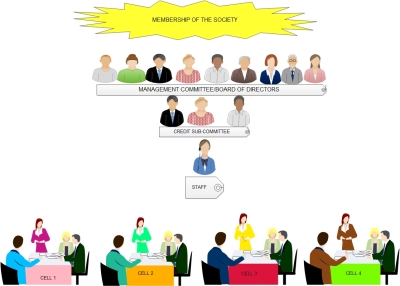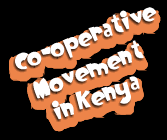1. Introduction
The Sacco Societies Regulatory Authority (SASRA) is empowered to license, regulate and supervise deposit taking Sacco Societies under the Sacco Societies Act 2008 (the Act), and the Regulations issued there under. The Act requires all Sacco Societies carrying out deposit taking business to apply for licenses from SASRA (Section 23 of the Act and Regulations 4). Deposit taking Sacco societies in the context of the Act refers to the Sacco Societies operating Front Office Savings Activity (FOSA).
2. Who should apply for license?
With effect from 18th June 2010, the date of publication of the Sacco Societies (Deposit Taking Sacco Business) Regulations, 2010:
All Sacco Societies intending to operate FOSA shall apply for license from SASRA (section 23 of the Act and regulation 4(2)); and
All Sacco Societies already operating FOSAs are required to apply for license from SASRA by 17th June 2011.
3. What are the licensing Procedures?
The licensing procedures are detailed in Section 24 of the Act and Section 4 of the Regulations. These procedures are split into five main stages as explained below.
3.1 First stage: Application for License
Duly complete and submit the “APPLICATION FORM FOR A LICENCE” coded SASRA 1/001) in the regulations for SACCO Societies (Deposit Taking Business) to SASRA. This form is available here. The completed application form should be accompanied by supporting documentation including:
a) a certified copy of the Sacco society’s registration certificate, issued under the Co-operative Societies Act [Cap 490] Laws of Kenya.
b) a verified official notification of the Sacco society’s registered head office and branches, if any;.
c) a certified copy of the Sacco society’s bylaws.
d) a certified extract of minutes of the general meeting resolution authorizing the application for deposit taking license. This requirement applies to Sacco Societies seeking to commence FOSA operations.
e) name of the proposed chief executive officer.
f) Certified copies of the financial statements for the last three years
g) Evidence that the Sacco society has adequate capital by completing and submitting the Capital Adequacy Return (downloadable from http://www.sasra.go.ke) as set out in Form 1 in the second schedule to the Sacco Societies (DT) Regulations, 2010. Refer to the guidance notes on capital adequacy for capital requirements at the point of making the application for license.
h) Business plan and Feasibility study available here
A Sacco Society must prepare and submit a comprehensive four year business plan in line with the transitional provisions (and feasibility study for a Sacco Society making the application to commence FOSA operations) detailing:
1. the vision and mission;
2. Scope and nature of business operations;
3. Economic and financial environment;
4. Organizational structure and management;
5. Financial and risks analysis;
6. Projected financial statements and analysis using the format provided in the regulations. The projections should show how the institution will meet the prudential standards within the plan period, namely:
1.
Capital adequacy – indicate sources of capital over the plan period.
Loans quality and provisioning – Evaluate the loan portfolio, age the delinquency and make provisions as appropriate.
Liquidity – plans on liquidity management in full compliance with regulatory requirements.
Investment – divesting to comply with regulation 48 (limits on property, equipment and financial assets).
Sustaining the asset structure and quality
1. Control measures and monitoring procedures
The financial projections are based on the business plan and hence should assist in monitoring the strategic goals of the Sacco Society and therefore an implementation plan and monitoring framework should be included.
Note: Where the Sacco Society has a current business plan, the same should be reviewed in the light of the regulatory requirements and the four years transitional period.
h) Fit and Proper forms
Duly complete and submit the “Fit and Proper test” form (SASRA 01/002) with the application for license. The form should be completed by all persons proposed as directors and senior management as defined in the form. This form is available here.
3.2 Second Stage: Letter of Intent
SASRA will assess the application for fulfillment of the requirements in the first stage and if satisfied issue a Letter of Intent to the Sacco Society to put the following in place:
3.2.1 Institutional Infrastructure or business premises appropriate for deposit taking Sacco business. This includes but not limited to:
A banking hall;
A adequate working space;
Physical security measures; and
Strong room and safe.
3.2.2. Management Information System
The Sacco Society’s Information Management System must be capable of performing and accounting for all transactions and providing the minimum reports required by the Authority in an accurate and timely manner. The system should be operationally integrated and provide adequate security including data back up.
3.2.3 Risk Management policies and internal control systems
Sacco Societies face constant risks in the course of their business including credit, liquidity, interest rate, operational, reputation and regulatory risks. The Authority will require the Sacco Society to develop risk management policy framework addressing each of the risk identified. The risk management framework must address the following key considerations.
a. Clear definition of roles and responsibility of the Board and management in development, implementation and review of the risk management systems;
b. Adequate policies, procedures and limits;
c. Risk monitoring and information system;
d. Adequate internal controls and audit specific to each risk area.
3.3 Third stage: Onsite inspection
Upon completion of all the requirements specified in the Letter of Intent, the Sacco shall notify SASRA so that an independent on site inspection can be conducted to ascertain compliance. The inspection will be carried out within 30days from date of notification.
3.4 Fourth stage: Letter of Compliance
Upon completion of on-site inspection, if SASRA is satisfied that the Sacco Society has complied with all the conditions as stated in the letter of intent, it shall issue a compliance letter allowing the Sacco Society to pay the license fees within 30days.
3.5 Fifth stage: Issuance of a License
SASRA shall issue a license to the applicant Sacco Society upon payment of license fee of Ksh.50,000 (fifty thousand shillings) for head office and Ksh.20,000 (twenty thousand shillings) for each branch. The license shall be issued within 14days from the date of payment of the license fees.
4. What happens if a Sacco Society operating a FOSA at the commencement of the Regulations does not apply for license within the twelve months provided?
In line with Section 23(1), such a Sacco Society is in contravention of the law and the officers liable to the actions stipulated in section 23(2) of the Act among others.
5. Other matters
5.1 What happens after licensing of a Sacco Society?
a. The Authority shall within fourteen days from date of licensing publish in the Kenya gazette particulars of any newly licensed Sacco society.
b. At the beginning of each year and not later than 31st January, the Authority shall publish in at least one newspaper of national circulation particulars of licensed Sacco societies.
5.2 When is renewal of a license due?
A licensed Sacco Society will be required to apply for renewal of a license at least ninety (90) days before the expiry of its operating license in respect of its head office and any other place of business. The expiry date for all licenses will be 31st December.
Filed under: Co-operative Legislation In Kenya, Uncategorized | Tagged: Act, Annual general meeting, blogger of co-operatives, Board of directors, Business, Business and Economy, By-Laws, co operative society, co ops, Co-operative Movement in Kenya, Co-operative Societies Rules, Co-operatives, conditions necessary for registration of a cooperative society in kenya, Cooperative, cooperative in kenya, corporate, Credit Committee, Credit history, Credit risk, Credit score, Credit union, economic prosperity, Education, Environment, Finance, Financial Services, Funds, Government, how to register a chama in kenya, ICA, imarika sacco, Income tax, Industries, Information system, Intellectual property, Kenya, Law, Loan, loan given to small scale business from co-operative banks in kenya, Management, Management information system, managing committee of cooperative society, Market research, Marketing, Marketing and Advertising, Marketing plan, Marketing strategy, Movement, mutual organization, NACHU, Niche market, policy implementation, Politics, principles, registration of a sacco in kenya, Sacco, sacco blog, sacco blogs, self responsibility, Self-help, sustainable success, The Co-operative Bank, together, Value added tax, WOCCU | 4 Comments »



 b) The Management and Supervisory Committee members, and employees of the society hold in the strictest confidence all transactions of the society with its members.
b) The Management and Supervisory Committee members, and employees of the society hold in the strictest confidence all transactions of the society with its members. Banks and
Banks and  Saccos also need the ‘power to add, change, evolve, or self-organize system structure’ (
Saccos also need the ‘power to add, change, evolve, or self-organize system structure’ ( frustrated and withdraw their membership from the society as they cannot get loans when they apply for them. Membership withdrawal affects society’s
frustrated and withdraw their membership from the society as they cannot get loans when they apply for them. Membership withdrawal affects society’s  One of the major challenge of cells is that management committee/board of directors and
One of the major challenge of cells is that management committee/board of directors and  All loans must be secured by at least three
All loans must be secured by at least three  This is a broad term which refers to those activities which are deliberately undertaken by the service or goods provider with the objective of satisfying the current
This is a broad term which refers to those activities which are deliberately undertaken by the service or goods provider with the objective of satisfying the current  (2) No amendment of the by-laws of a co-operative society shall be valid until the amendment has been registered under this Act, for which purpose a copy of the amendment shall be forwarded to the
(2) No amendment of the by-laws of a co-operative society shall be valid until the amendment has been registered under this Act, for which purpose a copy of the amendment shall be forwarded to the  The
The  PURPOSE
PURPOSE Please tell me, how much do you make an hour?” So, father told him that “I make Ksh. 500 per hour.” “Oh”, the little boy replied, with his head down. Looking up, he said, “Dad, may I please borrow Ksh. 300?” The father furiously said, “if the only reason you asked about my pay is so that you can borrow some
Please tell me, how much do you make an hour?” So, father told him that “I make Ksh. 500 per hour.” “Oh”, the little boy replied, with his head down. Looking up, he said, “Dad, may I please borrow Ksh. 300?” The father furiously said, “if the only reason you asked about my pay is so that you can borrow some 
 The Mandate of the Ministry of Industrialization and Enterprise Development Department of Co-operative Development and Marketing is specified in the Presidential Circular No. 1/2005 on organization of the Government of the
The Mandate of the Ministry of Industrialization and Enterprise Development Department of Co-operative Development and Marketing is specified in the Presidential Circular No. 1/2005 on organization of the Government of the 